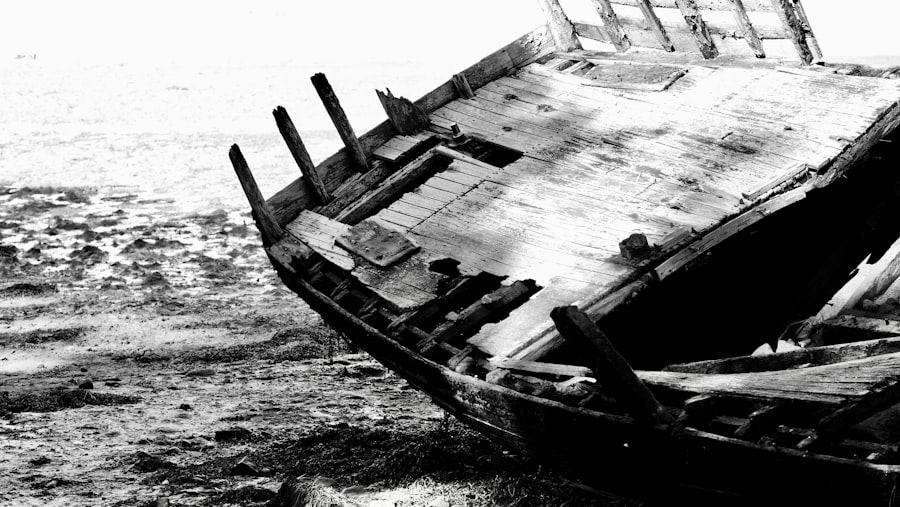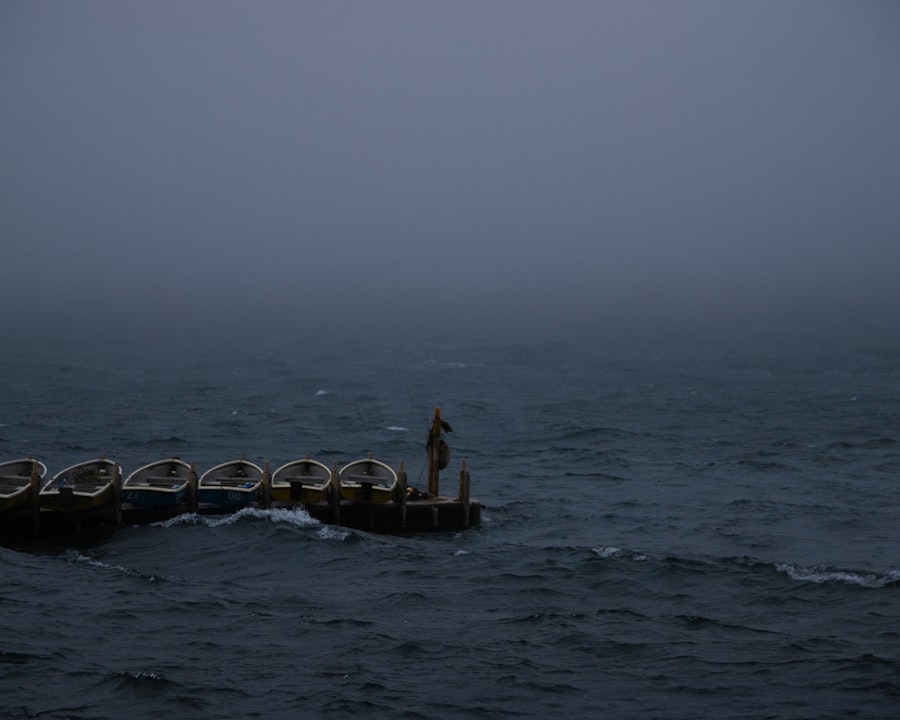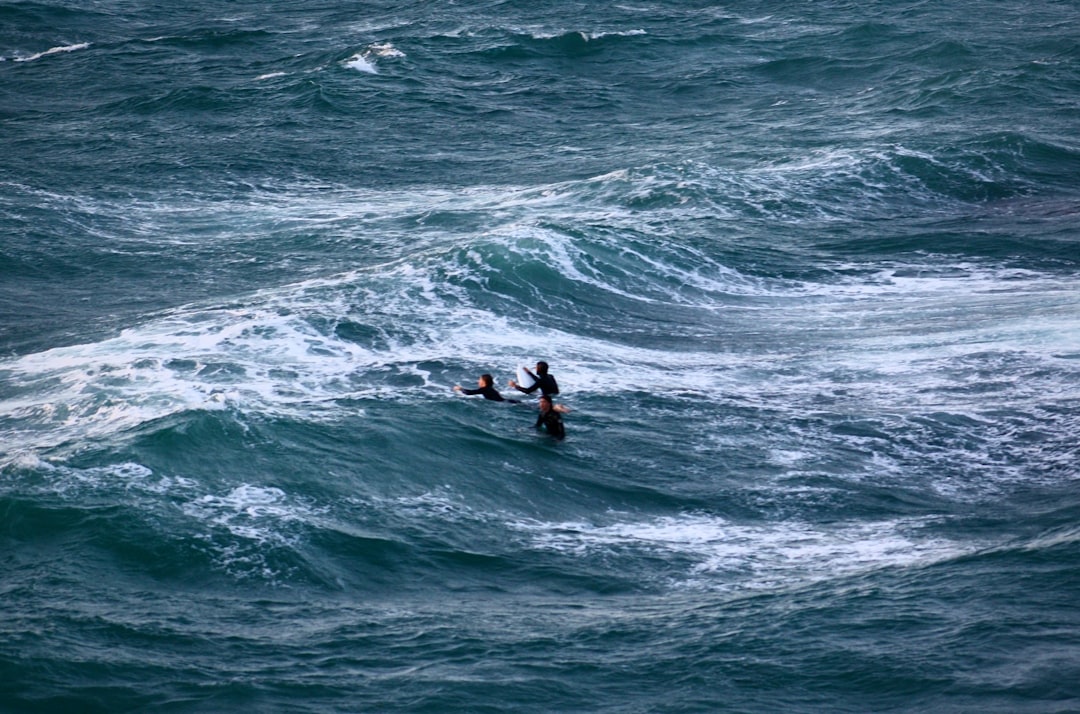The Drake Passage, a body of water that separates South America from Antarctica, is notorious for its unpredictable and often violent conditions. Stretching approximately 600 miles, this maritime corridor is characterized by strong currents, fierce winds, and tumultuous waves that can reach heights of over 30 feet. Sailors and navigators have long regarded the Drake Passage as one of the most challenging routes in the world, with its reputation for sudden storms and rapidly changing weather patterns.
The passage serves as a gateway to the Antarctic, attracting adventurers, researchers, and tourists alike, all drawn by the allure of the icy continent. However, the beauty of the surrounding landscapes belies the dangers that lurk beneath the surface. The Drake Passage has witnessed numerous maritime disasters over the years, with vessels succumbing to its treacherous waters.
The combination of extreme weather conditions and the isolation of the region creates a perilous environment for any ship attempting to navigate through. As such, the Drake Passage stands as a stark reminder of nature’s power and the risks associated with maritime exploration.
Key Takeaways
- The Drake Passage is known for its treacherous waters, making it a challenging route for ships to navigate.
- The sinking of the MV Explorer in the Drake Passage was a tragic maritime disaster that resulted in the loss of crew and passengers at sea.
- The search and rescue efforts following the sinking of the MV Explorer were extensive and involved multiple organizations and countries.
- The impact on the families and loved ones of the victims of the MV Explorer tragedy was profound and long-lasting.
- Lessons learned from the MV Explorer tragedy have led to improvements in safety and preparedness in the Drake Passage, but recent events, such as the loss of the Antarctic cruise ship Ocean Nova, highlight the ongoing challenges.
The sinking of the MV Explorer: A tragic maritime disaster
On November 23, 2007, the MV Explorer met a tragic fate in the icy waters of the Drake Passage. This cruise ship, which was carrying 154 passengers and crew members, encountered a series of unfortunate events that led to its sinking. Initially designed for polar expeditions, the MV Explorer was well-equipped for navigating icy waters; however, it was not immune to the dangers posed by the Drake Passage.
Reports indicated that the vessel struck an uncharted iceberg, leading to a breach in its hull that compromised its integrity. As water flooded into the ship, chaos ensued on board. The crew acted swiftly to initiate emergency protocols, urging passengers to don life jackets and prepare for evacuation.
Despite their best efforts, the situation quickly escalated beyond control. Within hours, the MV Explorer succumbed to the relentless waves and icy depths of the Drake Passage.
Remembering the crew and passengers lost at sea

The sinking of the MV Explorer left a profound impact on those who lost their lives in the disaster. Among the 154 individuals on board were seasoned travelers seeking adventure and exploration, as well as crew members dedicated to ensuring a safe and enjoyable experience for their guests. Each person aboard had their own story, dreams, and aspirations that were tragically cut short by the unforgiving nature of the Drake Passage.
In the aftermath of the sinking, memorials were held to honor those who perished at sea. Families and friends gathered to share memories and celebrate the lives of their loved ones, reflecting on their passions for travel and exploration. The loss resonated deeply within communities around the world, as news of the tragedy spread through media outlets and social networks.
The memory of those lost in this maritime disaster serves as a poignant reminder of the fragility of life and the unpredictable forces of nature that can alter destinies in an instant.
The search and rescue efforts in the aftermath of the sinking
| Date | Location | Number of missing | Number of rescued | Number of casualties |
|---|---|---|---|---|
| April 14, 1912 | North Atlantic Ocean | Over 1,500 | Approximately 700 | Approximately 1,500 |
Following the sinking of the MV Explorer, search and rescue operations were launched almost immediately. The remote location of the incident posed significant challenges for rescuers, who faced harsh weather conditions and rough seas while attempting to locate survivors. Multiple vessels from nearby expeditions joined forces with local authorities to scour the waters for any signs of life.
Helicopters were deployed to assist in aerial searches, while nearby ships navigated treacherous waters in hopes of finding survivors or recovering bodies. Despite their valiant efforts, only a handful of individuals were rescued from the frigid waters. The search lasted for several days, with rescuers battling not only physical challenges but also emotional turmoil as they grappled with the reality of loss.
The operation underscored both the bravery of those involved in rescue efforts and the stark limitations faced when responding to maritime disasters in such remote locations. Ultimately, while some lives were saved, many families were left with unanswered questions and an enduring sense of grief.
The impact on the families and loved ones of the victims
The sinking of the MV Explorer had a profound impact on families and loved ones left behind by those who perished at sea. For many, it was a devastating loss that shattered lives and altered family dynamics forever. The emotional toll was immense; parents lost children, spouses lost partners, and friends lost companions in an instant.
The tragedy not only left a void in their lives but also raised questions about safety and accountability in maritime travel. In the wake of such a disaster, support networks emerged to assist grieving families in navigating their loss. Counseling services were made available to help individuals process their grief and find ways to cope with their overwhelming emotions.
Community gatherings provided spaces for shared mourning and remembrance, allowing families to connect with others who had experienced similar losses.
Lessons learned from the MV Explorer tragedy

The sinking of the MV Explorer prompted a thorough examination of maritime safety protocols and regulations governing vessels operating in treacherous waters like the Drake Passage. Investigations revealed critical lessons regarding navigation practices, emergency preparedness, and vessel maintenance that needed to be addressed to prevent future tragedies. One significant takeaway was the importance of accurate mapping and charting in icy regions where uncharted obstacles could pose severe risks.
Additionally, training for crew members was scrutinized to ensure they were adequately prepared for emergencies at sea. Enhanced safety drills became a focal point for cruise lines operating in challenging environments, emphasizing rapid response times and effective communication during crises. The tragedy served as a catalyst for change within the maritime industry, leading to improved safety standards aimed at protecting both passengers and crew members alike.
The recent loss of the Antarctic cruise ship, Ocean Nova
In recent years, another maritime tragedy struck when the Antarctic cruise ship Ocean Nova encountered difficulties while navigating through icy waters. This incident reignited concerns about safety measures in place for vessels operating in extreme environments like those found in Antarctica. Although details surrounding this particular incident are still emerging, it serves as a stark reminder that even with advancements in technology and safety protocols, risks remain inherent when traversing unpredictable waters.
The Ocean Nova incident has prompted renewed discussions among industry stakeholders regarding best practices for ensuring passenger safety during polar expeditions. As more travelers seek adventure in remote regions, it becomes increasingly vital for cruise lines to prioritize safety measures while maintaining an enjoyable experience for their guests. The lessons learned from past tragedies must inform future practices to mitigate risks associated with navigating challenging maritime environments.
Examining the safety measures and regulations for ships in the Drake Passage
In light of past tragedies like that of the MV Explorer and more recent incidents involving vessels like Ocean Nova, there has been a concerted effort to examine existing safety measures and regulations governing ships operating in the Drake Passage. Regulatory bodies have sought to enhance guidelines surrounding vessel design, crew training, emergency preparedness protocols, and navigation practices specific to this perilous region. One key area of focus has been improving communication systems between vessels operating in close proximity within these treacherous waters.
Enhanced coordination among ships can facilitate timely responses during emergencies while also providing valuable information regarding changing weather conditions or potential hazards ahead. Additionally, ongoing training programs for crew members emphasize situational awareness and decision-making skills necessary for navigating unpredictable environments effectively.
The role of weather and environmental conditions in maritime disasters
Weather plays a critical role in maritime disasters, particularly in regions like the Drake Passage where conditions can change rapidly and without warning. Factors such as wind speed, wave height, and temperature fluctuations can significantly impact a vessel’s stability and navigability. Understanding these environmental conditions is essential for ensuring safe passage through treacherous waters.
In recent years, advancements in meteorological technology have improved forecasting capabilities for mariners operating in challenging environments. However, despite these advancements, unpredictable weather patterns remain a constant threat to vessels traversing areas like the Drake Passage. As climate change continues to influence global weather systems, it becomes increasingly important for mariners to remain vigilant and adaptable when navigating through such volatile regions.
The psychological toll on survivors and rescuers in maritime tragedies
The psychological impact of maritime tragedies extends beyond those who lose their lives at sea; survivors and rescuers often grapple with profound emotional challenges as well. Survivors may experience survivor’s guilt or post-traumatic stress disorder (PTSD) as they come to terms with their experiences during life-threatening situations. Similarly, rescuers face their own emotional burdens as they witness loss firsthand while striving to save others.
Support systems play an essential role in helping both survivors and rescuers navigate their emotional journeys following traumatic events at sea. Counseling services tailored specifically for those affected by maritime disasters can provide vital resources for processing grief or trauma while fostering resilience among individuals facing such challenges. Acknowledging these psychological tolls is crucial not only for healing but also for improving future responses during emergencies at sea.
Moving forward: Improving safety and preparedness in the Drake Passage
As maritime travel continues to grow in popularity among adventurers seeking unique experiences in remote regions like Antarctica, it is imperative that safety measures evolve alongside this demand. Moving forward requires a commitment from industry stakeholders—cruise lines, regulatory bodies, and mariners alike—to prioritize safety above all else when navigating challenging environments such as the Drake Passage. Investments in technology aimed at enhancing navigation systems or improving vessel design can significantly reduce risks associated with operating in treacherous waters.
Additionally, ongoing training programs focused on emergency preparedness will ensure that crew members are equipped with skills necessary for responding effectively during crises at sea. By learning from past tragedies while embracing innovation within maritime practices, stakeholders can work together toward creating safer experiences for all who venture into these breathtaking yet perilous waters.
Recently, the Drake Passage has been in the news due to a series of unfortunate events involving maritime incidents. These incidents have raised concerns about the safety and navigational challenges posed by this treacherous stretch of water. For more detailed information on the geographical and historical significance of the Drake Passage, you can refer to a related article on MyGeoQuest. This article provides insights into the unique conditions of the Drake Passage and its impact on maritime travel.
WATCH NOW! Drake Passage: Earth’s Deadliest Waters Revealed
FAQs
What is the Drake Passage?
The Drake Passage is the body of water between the southern tip of South America and the northern tip of the Antarctic Peninsula. It is known for its rough seas and challenging sailing conditions.
What recent deaths have occurred in the Drake Passage?
There have been reports of recent deaths of passengers on cruise ships in the Drake Passage due to natural causes and accidents. The exact details of these incidents may vary.
What safety measures are in place for travelers in the Drake Passage?
Cruise ships and tour operators in the Drake Passage are required to adhere to strict safety regulations and guidelines. This includes having trained staff, emergency response plans, and safety drills for passengers.
What should travelers consider before embarking on a journey through the Drake Passage?
Travelers should consider the potential risks and challenges of sailing through the Drake Passage, including rough seas, extreme weather conditions, and the remote location. It is important to choose a reputable and experienced tour operator and to be prepared for the conditions.
